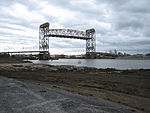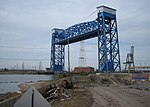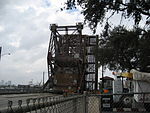William Frantz Elementary School

William Frantz Elementary School is an American elementary school located at 3811 North Galvez Street, New Orleans, Louisiana, 70117. Along with McDonogh No. 19 Elementary School, it was involved in the New Orleans school desegregation crisis during 1960. William Frantz Elementary School was one of the first all-white elementary schools in the Deep South to be integrated when Ruby Bridges became the first African-American student to attend the school. In 1960, when Bridges was six years of age, her parents responded to a request from the National Association for the Advancement of Colored People (NAACP) and volunteered her to participate in the integration of the New Orleans school system.The school was built in 1937. It was designed in understated Art Deco style by the school board's architect E.A. Christy. It was listed on the National Register of Historic Places in 2005 as William Frantz School.In 2014, a statue of Ruby Bridges was unveiled in the courtyard of William Frantz Elementary School.
Excerpt from the Wikipedia article William Frantz Elementary School (License: CC BY-SA 3.0, Authors, Images).William Frantz Elementary School
Alvar Street, New Orleans
Geographical coordinates (GPS) Address Nearby Places Show on map
Geographical coordinates (GPS)
| Latitude | Longitude |
|---|---|
| N 29.976388888889 ° | E -90.033055555556 ° |
Address
Alvar Street 2115
70117 New Orleans
Louisiana, United States
Open on Google Maps







